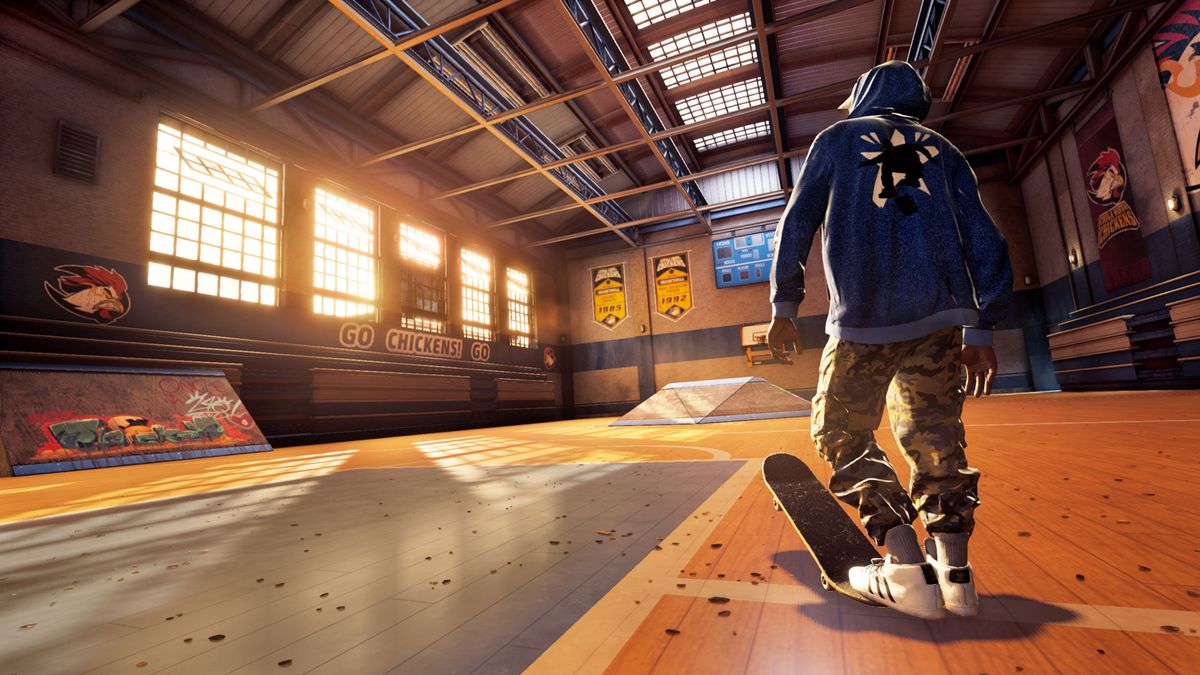12DOVE Verdict
A fitting remake for two of the best extreme sports games of all-time, Tony Hawk's Pro Skater 1 + 2 offers up more than mere nostaglia, but a potential glimpse at what the future of the series could look like.
Pros
- +
Finally, a worthy Tony Hawk's game
- +
As good a restoration as we've seen this gen
- +
Mix of old and new keeps things fresh
- +
Generous challenge system will keep fans busy
Cons
- -
Some maps have aged better than others
- -
Online multiplayer is slight
Why you can trust 12DOVE
The Tony Hawk's Pro Skater wilderness years are officially over. While fans will understandably remember the many (god, so many) times they've been burnt by the return of The Birdman in recent memory, Tony Hawk's Pro Skater 1 + 2 is a well-pitched palette cleanser for the series. It's both a nostalgic love letter to some of the best skateboarding games ever made and an exhilarating reminder that Tony could still have plenty more to offer than just trips back to the past.
Mainly, that's because this feels like Tony Hawks. From the second you burst through the rotting wood barricade in Warehouse, every dormant muscle memory seems to screech into life, with the weight, momentum, and speed all seemingly ripped out of the old games and perfectly transplanted into this one. That includes the optimistic physics where you can grind up slopes by constantly starting a new grind on them and managing to grind high-up rails even if you're horizontal to them. All with a chaser of Goldfinger and Dead Kennedys to go with it.
Can you kickflip it?
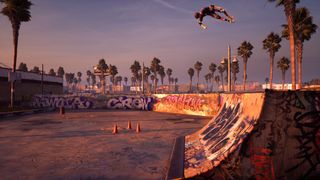
And it's all the better for it, because when you're rediscovering old favourite lines and spots (for me, it was grinding in a never-ending loop down by the fountain in NY City), there's a nostalgic joy from playing versions of these levels that are actually fun to play in the year of our Hawk 2020. Of course, heading back to the originals now would show just what time has done to them, so Vicarious Visions has done a stellar job of making the subtle tweaks it introduces seem like they've always been there.
There are the obvious technical ones - this has the added benefit of 60fps fremerates compared to the PS1 original, while the soundtrack is a flawless mix of past classics and modern earworms - and some important ones for the skating itself. The addition of moves from later in the series, such as Spine Transfers, Acid Drops, and Reverts stitch old levels together in ways that make combos easier and gives the skating a velvet-smooth feel to go with how it looks. While the mind's eye may always be the kindest, this achieves the most important part of any remake: making it play like how you remembered it, not how it actually was.
From Warehouse to Venice Beach
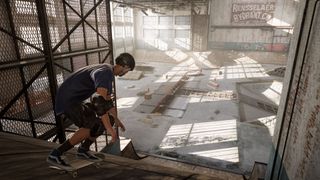
The developer also pulls this trick off with the visual design. Without wanting to be too vain, good lord do the areas you skate in look good. While the geography and objectives of every level remains virtually unchanged, each has been given a comprehensive touch-up. Venice Beach is now coated in graffiti and Magic Hour lighting, which pops even more with HDR. School actually looks like a school now rather than an industrial skate park with a few fire alarms slapped on, and Downtown's busy streets are even more enticing when they're lit up by street lamps and glowing signs. Plus, in one lovely touch, Tony Hawk's Pro Skater 2's opening level, Hangar, now has posters for every Neversoft Tony Hawk's game, along with a banner of the Neversoft logo. I could go on, but I'd rather get back to playing.
The result of the visual upgrade is that these levels don't look out of place in 2020, but still carry all the old memories you have of them. However, despite these areas all looking equally impressive, there's a noticeable difference in the complexity in what you can do in them between Tony Hawk's Pro Skater 1 and Pro Skater 2. While the original levels all tend to be self-contained, the sequel's versions come with a noticeable increase in scope and imagination. Comparing School and School 2 - which introduced a properly secret gym for you to explore, alongside different wings to skate through - is like stacking the first draft against the published article. This isn't necessarily a bad thing - you can't really knock Vicarious Visions for sticking with history - but the game's focus on replaying levels means that I find myself naturally gravitating to the sequel's maps.
Speaking of replaying levels, a simple online multiplayer mode gives you plenty of scope for playing with friends or other random skaters across the world. While I didn't get a chance to start a party to skate with IRL friends, Quick Play drops you into a map and cycles through classic multiplayer matches such as Trick Attack (highest score wins), Combo Mambo (highest combo wins), and Graffiti (most tagged items wins). While fun to dip in and out of, it does feel slight in a way the rest of the game doesn't.
Skate Shop till you drop
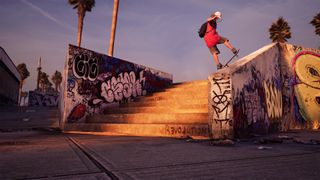
In perhaps the game's biggest change, the game's overall structure has been completely rethought to put an emphasis on a whole slew of challenges alongside the traditional checklist of objectives. And by slew, I mean 700-odd challenges. They range from easy pickings such as completing the tutorial to more demanding feats such as getting a Sick Score in each level in a single combo. There's also specific skater challenges, Create-A-Park challenges, multiplayer challenges… and yeah, there's a lot. If you're a cosmetic obsessive, welcome to your Mount Everest.
Initially, it's daunting to see so many 'Challenge Completed!' signs pop up while skating, especially as there's a healthy chance you'll have no idea what they're for. However, once you start getting past a few levels and getting a steady stream of cosmetics to deck your Create-A-Skater out in, they're not quite the wall of distractions they might initially appear to be. In fact, I've already 100%'d both Tony Hawk's Pro Skater 1 and 2 with my skater, but going through the hundreds of challenges has given me reason to dive back in and try different things. While it's too early to call if I'll still be checking stuff off in a month or two, the structure is in place to give me reasons to head back.
Feeling younger in my mind
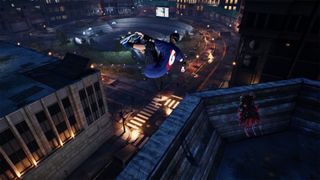
Of course, Tony Hawk's was never really about collectibles. It's always been at its best when you're dancing on the edge of chaos, stringing together combos as balance meters wobble worryingly over your skater, all to the tune of infectious punk and somehow making it look as graceful as Tony Hawk has aged. Few mainstream games manage to nail this particular juxtaposition of frenzied calm, which is probably why it's hard not to completely fall in love with it again. From hurling myself off rooftops to A Tribe Called Quest to rooting through Venice Beach to find half-pipe gaps, the adrenaline buzz this generates doesn't come purely from nostalgia, but the fact that this physics-defying brand of skating at its purest still has plenty of life left in it.
Vicarious Visions has built an engine that could actually push the series in a new direction, with the focus on skating rather than gimmicks that came from the annual release cycle that the series was stuck in. Here's hoping this is more of a warm up than a victory lap.

Ben Tyrer is a freelance games journalist with over ten years experience of writing about games. After graduating from Bournemouth University with a degree in multimedia journalism he's worked for Official PlayStation Magazine as a staff writer and games editor, as well as 12DOVE (hey, that's this website!) as a news editor. He's also contributed to Official Xbox Magazine, Edge, PC Gamer, GamesMaster, PC Games N, and more. His game of the year - no matter the year - is Rocket League.

"30 years of history reside in our tape backups": PlayStation's building a game preservation mineshaft vault with 200 million files going back to a 1994 build of PS1 JRPG Arc the Lad

The other big Soulslike out this week has some Bloodborne and Dark Souls 3 in its combat, dev says, but "we would rather call AI Limit an action RPG"
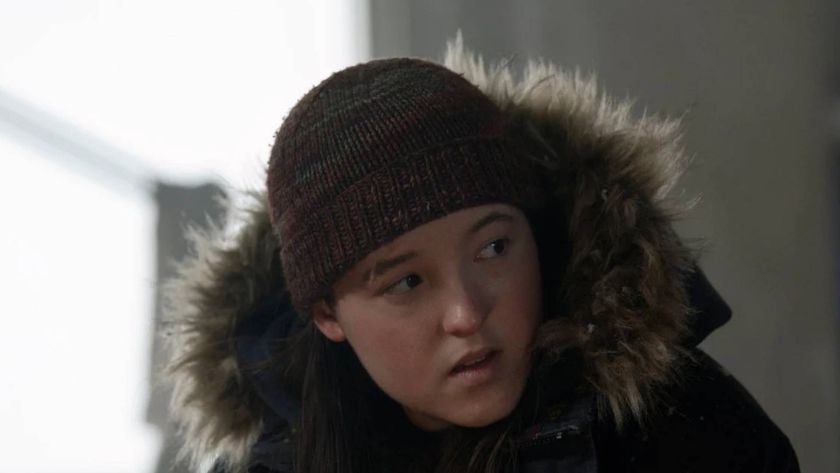
The Last of Us showrunner says "so much" has happened in the five-year gap since we last saw Joel and Ellie: "That's part of the mystery of the season"
